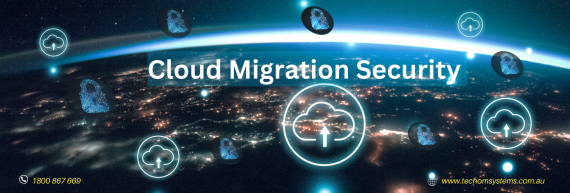Mastering IT governance is essential for success. As an IT manager, comprehending the core principles and implementing effective strategies is vital for making informed decisions and steering your organisation towards success. In this article, we explore The Top 8 IT Governance Best Practices tailored for the Australian IT environment in 2024.
Understanding IT Governance
Embracing the Essence
IT governance is a pivotal aspect of corporate governance, offering a structured approach to managing diverse facets of IT services. It encompasses processes, policies, and standards that guide your IT team in overseeing overall IT operations within your Australian organisation.
The Key Goals
The primary goal of IT governance is to enhance efficiency in IT operations, mitigate risks, minimise costs, and ensure regulatory compliance with Australia’s evolving business requirements. Striking the right balance between innovation and risk management is crucial and achieved through defining roles, responsibilities, and procedures.
Significance of IT Governance
The Backbone of Australian IT Success
IT governance serves as the backbone of success for Australian companies for several reasons:
- Better Business Insights: Anticipate performance and potential risks in the Australian context.
- Alignment with Organisational Goals: Ensure technology aligns with Australian business objectives.
- Achieving Company Goals: Optimise tech resources to meet Australian company objectives.
- Measuring IT Investments: Assess the effectiveness of IT investments in the Australian market.
Bridging the Gap
Think of IT governance as the bridge connecting technology management and development in the Australian IT landscape, ensuring seamless alignment with Australian business needs.
The Crucial Role of IT Governance in Australia
Key Responsibilities
The role of IT governance in Australia revolves around:
- Defining Objectives: Determine objectives, goals, vision, and mission in the Australian business context.
- Project Oversight: Plan, budget, authorise, schedule, and monitor all projects and changes within the Australian IT sphere.
- Framework Implementation: Design and implement the IT governance framework tailored for the Australian environment.
- Risk Management: Manage risks and liabilities in all IT projects specific to the Australian market.
Organisational Structure
Efficient IT governance in Australia relies on a well-defined structure with roles and responsibilities:
- CIOs and Board Directors: Oversee all IT functions, ensure alignment with Australian business objectives, manage resources and budgets, and establish policies and standards.
- IT Managers: Supervise specific IT teams, manage day-to-day operations, implement projects, and report progress to the CIO, considering the Australian landscape.
- Data Governance Manager: Ensure data quality and integrity in the Australian context, define data policies, manage access and protection, and monitor data compliance.
- IT Security Team: Safeguard IT systems and data following Australian regulations, develop security policies, respond to incidents, and conduct security training.
- IT Audit Committee: Set strategic direction, approve budgets and projects, and monitor alignment with Australian business goals.
IT Governance Frameworks in Australia
To gain a competitive advantage in the Australian IT ecosystem, organisations must develop IT governance frameworks. Examples include:
- COBIT (Control Objectives for Information and Related Technology)
- ITIL (Information Technology Infrastructure Library)
- COSO (The Committee of Sponsoring Organisations of the Trade Way Commission)
- CMMI (The Capability Maturity Model Integration)
- FAIR (Factor Analysis of Information Risk)
Domains of IT Governance in Australia
Strategic Alignment
Ensure IT activities in Australia align with organisational goals by understanding and aligning IT plans, projects, and resources with Australian business strategy.
Risk Management
Identify and evaluate risks specific to the Australian market, implement measures to mitigate or manage them, and safeguard company information and IT systems.
Resource Management
Allocate resources effectively in the Australian IT context, ensuring the right tools and skills are in place to support IT initiatives without overspending.
Performance Measurement
Track and evaluate IT system performance using key performance indicators (KPIs) tailored for the Australian market, making data-driven decisions for improvement.
Compliance and Security
Ensure IT practices meet Australian compliance standards, protecting sensitive data and securing IT infrastructure against potential breaches.
8 IT Governance Best Practices for Australia
1. Make IT Infrastructure Essential to Australian Business Strategy
Embrace the digital shift in Australia by prioritising IT infrastructure, maximising resources, and strengthening your digital transformation strategy for the Australian market.
2. Put the Right Team in Place for the Australian IT Landscape
Select a skilled and innovative team in the Australian context by planning recruitment strategically, ensuring the ability to adapt and innovate over time.
3. Monitor IT Performance in Australia
Appoint someone to monitor IT performance in the Australian market, making adjustments for continuous improvement and ensuring effectiveness.
4. Define Roles and Responsibilities Tailored for Australia
Clearly define roles, scope, and processes within IT governance for the Australian market, fostering effective decision-making, oversight, and accountability.
5. Highlight Integrity in the Australian IT Environment
Communicate priorities clearly through a compelling vision statement, mission statement, and objectives, emphasising oversight and management of policies in the Australian context.
6. Don’t Forget About Compliance in Australia
Regularly review security policies in line with Australian standards and adhere to compliance requirements, safeguarding the company’s most valuable resource—data.
7. Prioritise Effective Risk Management in the Australian IT Market
Identify, assess, and mitigate reputational, operational, financial, regulatory, and legal risks in the Australian IT landscape, tailoring strategies to your company’s size and processes.
8. Make Employees’ Education a Priority in Australia
Provide comprehensive training on recognising and preventing security breaches in the Australian IT context, emphasising the importance of employee education for maintaining security.
Leveraging TECHOM Systems for Effortless IT Governance
Discover how TECHOM Systems’ identity governance and administration (IGA) expertise can empower your Australian organisation in securing and managing access within your SaaS ecosystem.
With automated user provisioning, access assessments, and self-service access requests, TECHOM Systems ensures diligent administration of access privileges, fortifying security measures, and ensuring compliance with Australian regulatory standards. Advance your IT governance, enhance efficiency, and secure the future of your Australian organisation with TECHOM Systems. Contact us now for tailored IT solutions, strategic guidance, and unparalleled support in managing your IT operations.
For Inquiries and Consultations:
- Phone: 1800 TOSNOW / 1800 867 669
- Email: hello@techomsystems.com.au
Ready to revolutionise your IT strategy? Book a free consultation with our experts here today!
Discover the seamless possibilities of IT excellence tailored to your requirements.
Elevate your IT journey – Contact Us now!













